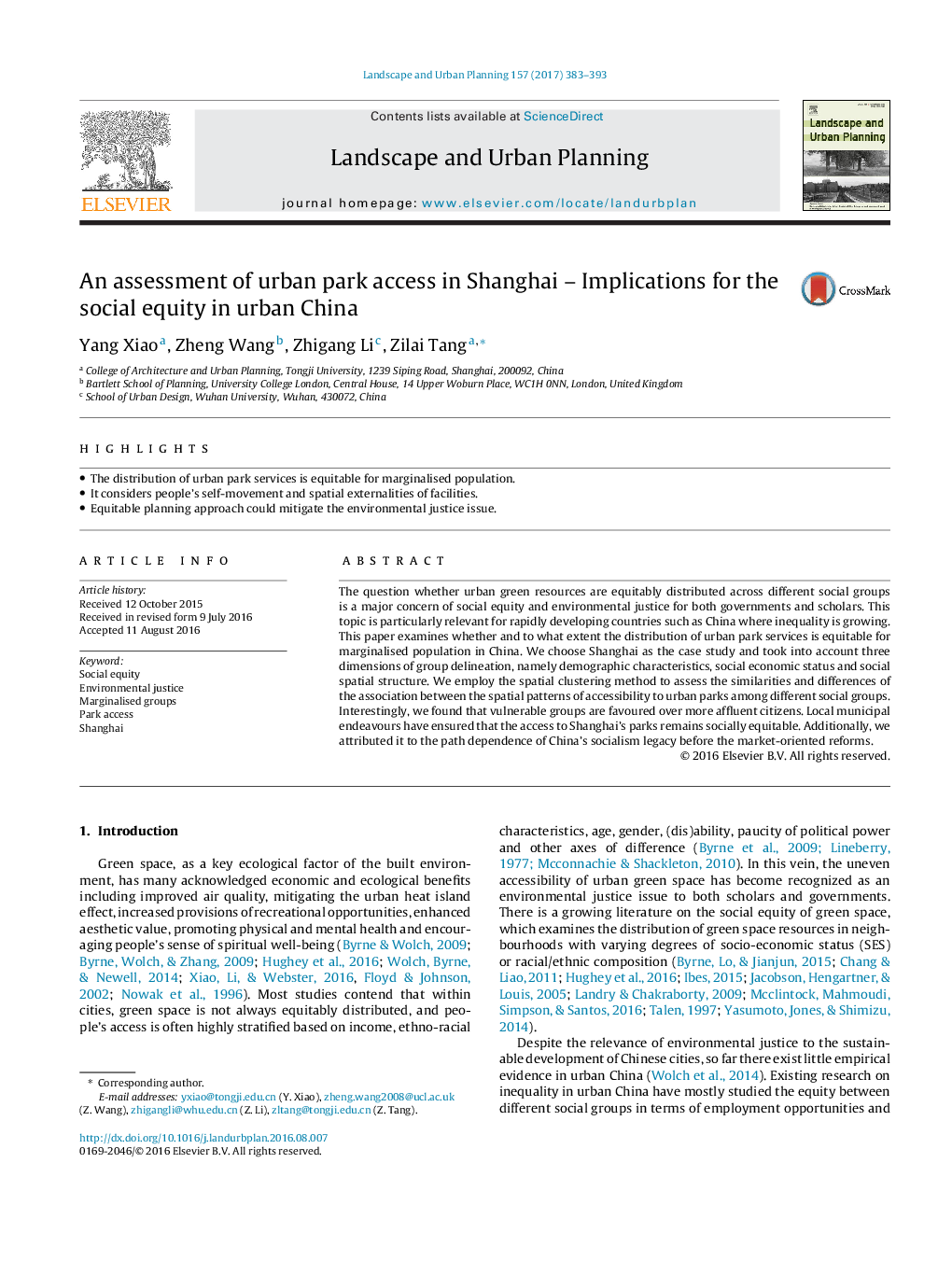| Article ID | Journal | Published Year | Pages | File Type |
|---|---|---|---|---|
| 7460391 | Landscape and Urban Planning | 2017 | 11 Pages |
Abstract
The question whether urban green resources are equitably distributed across different social groups is a major concern of social equity and environmental justice for both governments and scholars. This topic is particularly relevant for rapidly developing countries such as China where inequality is growing. This paper examines whether and to what extent the distribution of urban park services is equitable for marginalised population in China. We choose Shanghai as the case study and took into account three dimensions of group delineation, namely demographic characteristics, social economic status and social spatial structure. We employ the spatial clustering method to assess the similarities and differences of the association between the spatial patterns of accessibility to urban parks among different social groups. Interestingly, we found that vulnerable groups are favoured over more affluent citizens. Local municipal endeavours have ensured that the access to Shanghai's parks remains socially equitable. Additionally, we attributed it to the path dependence of China's socialism legacy before the market-oriented reforms.
Related Topics
Life Sciences
Agricultural and Biological Sciences
Ecology, Evolution, Behavior and Systematics
Authors
Yang Xiao, Zheng Wang, Zhigang Li, Zilai Tang,
